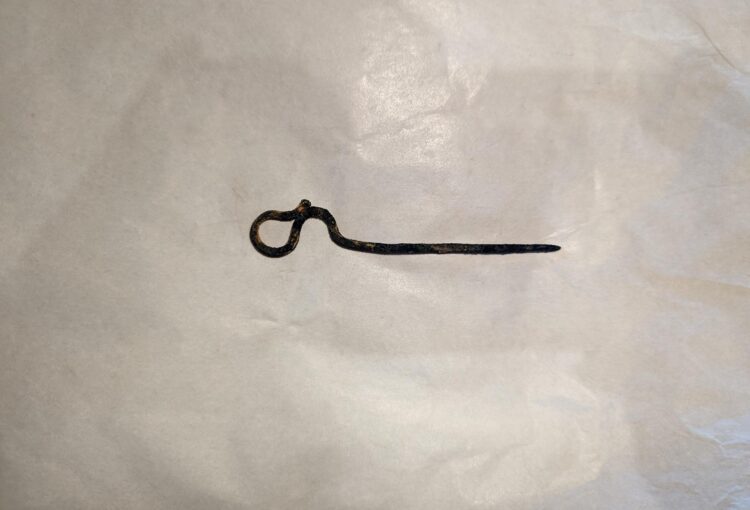Tayside Treasures is a free online event featuring talks from staff from 14 different museums across Tayside. Each member of staff picks an object from their collection and prepares a 5 minute talk discussing the object they have selected. This year it took place on the 25th of May.
This year I was chosen to deliver this talk. I decided to pick the swan neck pin from Oakbank as it is a very beautiful but understudied object. There are several questions that need to be answered about this object: how it was made, how it got to Oakbank Crannog and what it might have been used for. My research on the pin was based around finding answers to these 3 questions.

We believe that the pin was used to fasten clothing together such as a cloak making it a very functional object. However, this piece is very well designed, someone has taken the time to make something that is functional but still aesthetically pleasing. This could perhaps suggest that the family living on Oakbank Crannog were a relatively high status family. Our staff and volunteers wear replica pins in order to create an immersive experience for visitors.
Discovering how it was made is a slightly trickier process. We know that the pin is made from some kind of copper alloy of some kind. There are several methods that can be used to create the wire. Firstly, you can use a draw plate. This involves pulling your wire through holes of varying diameter, making it thinner, until you get your desired width. Secondly, you can cast your metal, creating a mould, and pouring your metal directly into the shape you want. Thirdly, you can hammer your metal out until you get a thin piece of wire before shaping it into the design you require. In order to figure out which method might have been used we decided to measure the width of the straight part of the pin. If the sizes were consistent this would suggest that the pin had been drawn. However, when measured we discovered that the measurements were slightly varied and so we can conclude that it most likely hasn’t been drawn. Further analysis will have to be done in order to determine whether the pin has been cast or hammered and shaped.
The Crannog are hopeful that more tests can be carried out on the pin in order to determine how it came to be on Oakbank Crannog. It is possible that it was made on site. We know that the Crannog dwellers were metal-working as we have crucibles and iron slag in our collections. Down the road from the Crannog is Tomnadashan mine, a copper mine, which could potentially be where the copper was sourced from. If isotopic analysis is carried out on the pin it will be possible to determine if this is the case. However, if the copper was not sourced from this mine this still paves the way for research into trading and how far the copper or the pin itself travelled to get to Oakbank.
The Crannog Centre’s collection is very understudied and there are so many amazing stories that can be told from each artefact. I am looking forward to continuing my research on the swan neck pin and uncovering the story that it has to tell.
Watch Amy’s talk here:



